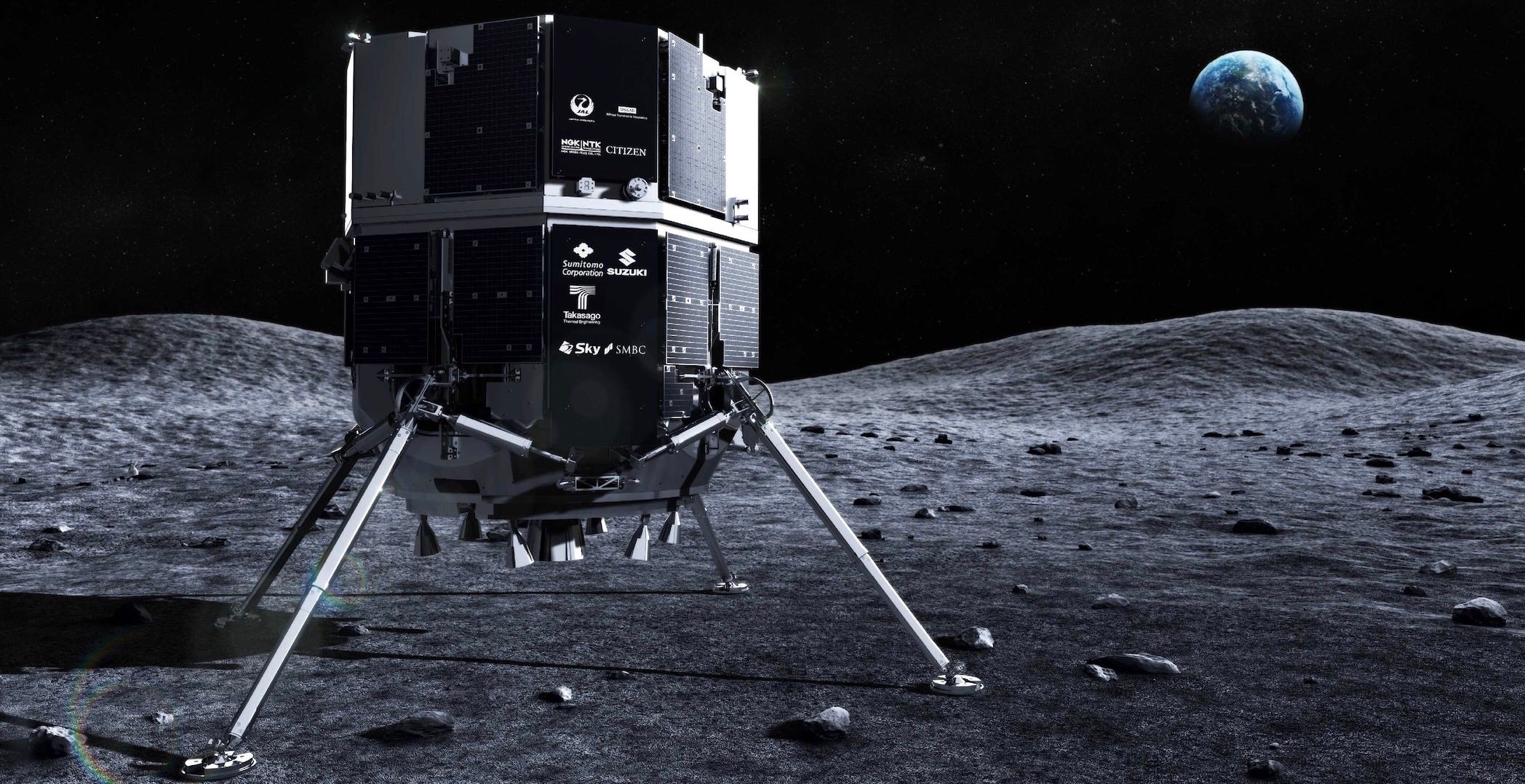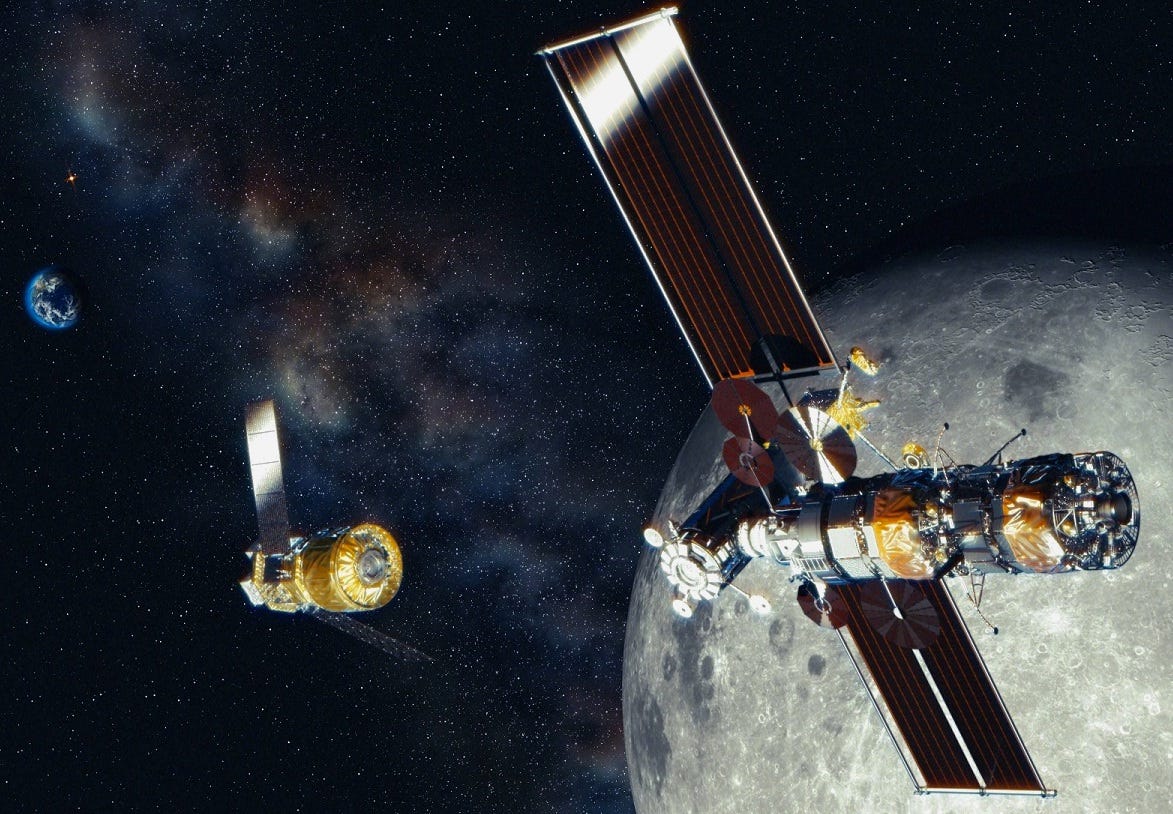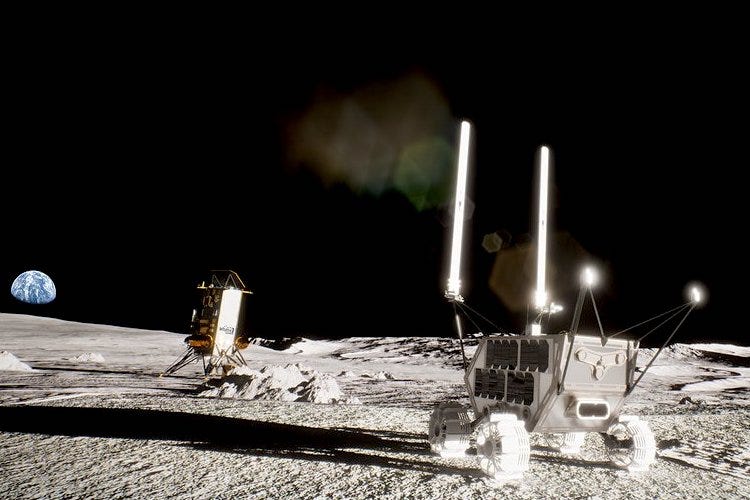Moon Monday #117: Mission updates, humans to Luna, building infrastructure, and more
Mission updates

ispace Japan’s first Moon lander, launched on December 11 last year, is now approaching the Moon as part of its fuel-efficient trajectory for an orbital capture attempt in late March. I applaud the fact that ispace has provided an unusually detailed per-subsystem lander status update, and hope that the upcoming wave of NASA-funded CLPS landers will do the same.
Relatedly, unlike continued insistence by several U.S. publications and popular tweeters that one of the two upcoming CLPS landers of Astrobotic and Intuitive Machines will be the first privately built spacecraft to touchdown on our Moon, ispace Japan’s landing attempt in end of April lends it the actual first shot. Now, I too am excited about both Astrobotic’s and Intuitive Machines’ respective missions but they aren’t even launching before May and June respectively, and there were never any firm signs otherwise all these prior months, so let’s keep our facts in line please.
ispace Japan began manufacturing the structural thermal model of their second Moon lander in February for testing, post which the plan is for the flight model to be assembled in Germany from April. As part of the same update, ispace Japan also announced three lander payloads for this 2024 mission: a water-splitting experiment by Takasago, an algae-based food production module by Euglena, and a deep space radiation monitoring probe by Taiwan’s National Central University.
As Firefly gears up for its first CLPS Moon landing mission in 2024, NASA has delivered one of its mission payloads, the Lunar GNSS Receiver Experiment (LuGRE), to the company for integration with the Blue Ghost lander. With this first-of-its-kind hardware, developed in collaboration with the Italian Space Agency, NASA aims to demonstrate a GNSS fix at the Moon. The lander will try getting a position lock using GPS and Galileo satellites, with signals millions of times fainter than those used by our phones. Tangent: I’ve covered the mission’s landing site and science in Moon Monday #70.
Crew to the Moon
JAXA has recruited two new astronaut candidates out a pool of 4127: 46-year-old Makoto Suwa and 28-year-old Ayu Yoneda. Post their 2-year training starting in April, they will be eligible for missions to the International Space Station and the NASA-led international Gateway lunar orbital station as part of Artemis missions. In return for getting Gateway seats for Japanese astronauts, JAXA is providing two key technologies to sustain crewed and uncrewed operations at the station for long periods:
- Critical life support systems and infrastructure components of the Gateway’s International Habitation module (i-HAB) for hosting astronauts
- The advanced HTV-X(G) spacecraft for supplying the Gateway with cargo starting 2030.
NASA and JAXA are also considering having a Japanese astronaut land on the Moon.

Andrew Jones reports that China has revealed a staged descent lander concept as part of its plans to land Chinese astronauts on the Moon before 2030. This adds to what we know about China building a new (and possibly reusable) super heavy-lift Moon rocket, derived from its existing Long March 5. A pair of these new launch vehicles would be able to push a crewed spacecraft and (separately) the landing system to lunar orbit, which would allow two astronauts to land on the Moon. Capable of launching up to 27,000 kilograms on a lunar trajectory, the launch vehicle would match the capacity of NASA’s current SLS rocket, which aims to architecturally similarly enable astronauts to land on the Moon with Artemis III mid-decade.
Many thanks to Epsilon3 for sponsoring this week’s Moon Monday.
Infrastructure, infrastructure, infrastructure
If you read that in Steve Ballmer’s chanting voice, I’m sorry that it worked. Joking aside, some lunar infrastructure plans by humans have made progress recently, thereby giving them more realism, and us more excitement.
Last year ESA’s Ministerial Council, a meeting of government ministers from each of the agency’s 22 Member States, approved ESA’s Moonlight plans to build a constellation of lunar satellites that will provide communications and navigation services to hardware on and around the Moon later this decade. ESA will be Moonlight’s anchor customer but expects companies to actively commercially provide NavCom services to public and private customers globally. To that end, ESA is now inviting and funding space firms from member states who propose either direct viable involvement in Moonlight or ability to provide novel services up top. In the same vein, the UK space agency is providing £51 million to UK companies.
Relatedly, Elizabeth Gibney has a great article on how ESA is leading the efforts to give the Moon its own time, including talking about its challenges, where Moonlight comes in, and how solving said problem will let us adapt a solution for the entire Solar System.
Intuitive Machines’ second Moon lander, aiming for launch in H2 2023, will deploy a rover by partner Lunar Outpost to test Nokia’s 4G/LTE network on the Moon. It will be the first such test to see if we can theoretically get high-throughput, long-range, and low-latency communications necessary for having a sustainable lunar presence in the future. But acquiring a license to operate this so-far-Earthbound 4G network on the Moon has been challenging precisely because it’s unprecedented. In a blog post, Nokia shares how it worked with several regulatory bodies both in the U.S. and worldwide to ultimately get an experimental spectrum certification for the mission as of last year.
Astrobotic will use Redwire’s spaceflight-proven Roll-Out Solar Arrays (ROSA) for its LunaGrid project, which aims to commercially provide power to hardware on the Moon’s poles wanting to survive its poorly lit terrain and frigid nights. Notably, a variant of ROSA will also power the Gateway’s Power and Propulsion Element.
After funding KSAT USA and SpaceLink last year to conduct studies on how they can enhance communications for future lunar missions via NASA’s Near Space Network (NSN), the agency is seeking by March 24 commercial provider applications who can enable either relay or direct-to-Earth communications for future lunarbound missions to and fro NSN. At the same time, NASA is broadening the NSN ground stations with more commercial antennae like those of KSAT. Related fun fact: In addition to using the Deep Space Network (DSN), NASA also utilized NSN relays and satellites during the Artemis I mission last year to supplement and fill in transitions between DSN’s changing availability.
For the 2023 BIG Idea Challenge, called the Lunar Forge, NASA is funding 7 university teams to advanced their concepts related to metal production on the Moon with a total amount of $1.1 million.

More Moon
The 54th Lunar and Planetary Science Conference begins next Monday! The program of this world’s largest planetary science conference lists, as expected, abundant lunar-related talks and posters. There’s also a special session on “The Geology of the Artemis Exploration Zone” for furthering the Artemis III landing site selection, which has me all psyched! 🪨
